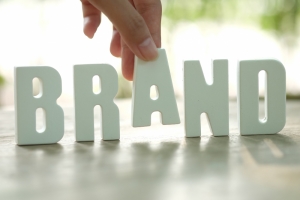When it comes to office design, most of us think about desks, chairs, and maybe some trendy standing workstations. But one aspect that often flies under the radar is color.
Believe it or not, the colors that surround us can have a significant impact on our mood, energy levels, and even productivity. Welcome to the world of color psychology, where a fresh coat of paint can do more than just spruce up your office. It can help your team perform better.
Why Color Matters in the Workplace
Colors are more than just decorative elements; they're powerful tools that can influence how we feel and how we work. Imagine walking into an office painted in drab, grey tones. It feels lifeless, right? Now picture the same office with walls painted in vibrant shades of blue or green. Suddenly, the space feels more alive, more welcoming, and most importantly more conducive to getting things done.
Color psychology is all about understanding how different hues affect our brains and behaviors. A study highlighted by Verywell Mind surveyed 4,598 individuals across 30 countries, revealing fascinating insights into the emotional connections people have with colors. For instance, 51% of participants associated the color black with feelings of sadness, while 43% linked white with a sense of relief.
This stark contrast between the emotions tied to these two colors underscores how powerful our associations with color can be. The difference is truly a matter of black and white.
Choosing the Right Colors for Your Office
When choosing colors for your office, it's crucial to consider both the nature of your business and the atmosphere you want to create. To ensure the best results, it's also wise to enlist the help of professional commercial painting services. You might think, "How hard can it be to paint a wall?" However, achieving the perfect color balance and finish is truly an art. Something best left to experts.
EA Pro Painters notes that professionals excel in color application, from choosing the right paint to achieving a flawless finish. They can also offer valuable advice on selecting shades that align with your brand's identity and suit the specific needs of your workspace.
Another key benefit of using commercial painting services is their flexibility. They can often complete the work outside of regular business hours, minimizing any disruption to your operations. With their expertise, you'll end up with a polished, professional space that not only looks great but also enhances the overall work environment.
Once you've selected the right painting service, here's a quick guide to what different colors can bring to your office:
Blue
Entrepreneur highlights that multiple studies have identified blue as the ideal color for boosting productivity and well-being in the workplace. Particularly beneficial for those in high-pressure, fast-paced jobs, blue's calming effect helps alleviate stress and maintain mental focus, allowing for more efficient task completion.
In addition to its soothing qualities, psychologists also note that blue can stimulate cognitive function. This makes it a powerful choice for enhancing both tranquility and mental clarity in a work environment.
What are some famous examples of blue in art and design?
Iconic uses of blue include Yves Klein's "International Klein Blue," which is known for its vibrant, deep blue hue. Additionally, blue has been a significant color in the works of artists like Vincent van Gogh. It is also prominent in the design of well-known blue-themed brands like Facebook and Twitter (Now X).
Green
Green has a lot going for it beyond just being easy on the eyes. It's known to positively influence thinking, relationships, and even physical health. Green is also known for its stress-relieving properties, which is why it's a common choice in medical facilities.
A study found that people who exercised indoors while watching a video of outdoor scenery with a green overlay felt less stressed. They also perceived their workout as less strenuous compared to when the video had a red or gray overlay. As per Verywell Mind, this phenomenon is known as the "green exercise effect."
Why is green considered calming for the eyes?
Green is calming for the eyes because it is a balanced and restful color. The human eye can detect green with high clarity and minimal strain, which helps reduce eye fatigue. Additionally, green is associated with natural environments, which contributes to its soothing effect.
Yellow
According to Color Psychology, the bright color yellow strongly impacts our mental and emotional state, triggering various responses. Yellow is known for boosting mental activity, sparking creativity, and fostering a sense of optimism.
Yellow enhances analytical thinking and sharpens decision-making by downplaying emotions. However, it can also tip the balance too far, leading to overly logical thinking that may lack compassion.
What is the yellow personality type?
The yellow personality type is often associated with traits such as optimism, enthusiasm, and sociability. People with a yellow personality are typically outgoing, energetic, and have a positive outlook on life.
Red
Red is best used as an accent color in areas where physical activity or high energy is desired, such as gyms or brainstorming rooms. This vibrant hue has the ability to increase heart rates and stimulate action, making it perfect for environments that thrive on energy and dynamism.
However, its intense nature makes red less suited for spaces where calm and focus are essential. It can be overly stimulating and potentially distracting in settings like offices or meditation rooms.
Neutral Tones (Greys, Whites, Beiges)
These colors are excellent for establishing a clean, professional look in any space. Their subtle tones can serve as a perfect backdrop, allowing brighter accent colors to take center stage and add personality to the environment.
However, it's important to use them thoughtfully, as an overabundance of neutral shades can risk making a space feel cold and uninspiring. Striking the right balance ensures that the neutral palette remains inviting while still allowing other colors to enhance the overall atmosphere.
Overall, color psychology can transform your office into a space that looks great and boosts your team's well-being and productivity. By understanding the effects of different colors, you can create an environment that helps your employees feel their best. Working with commercial painting services ensures that your office supports their best work.
So, the next time you're thinking about giving your office a makeover, remember: it's not just about picking a pretty color. It's about choosing hues that will make your workplace a more productive, happier place to be.






